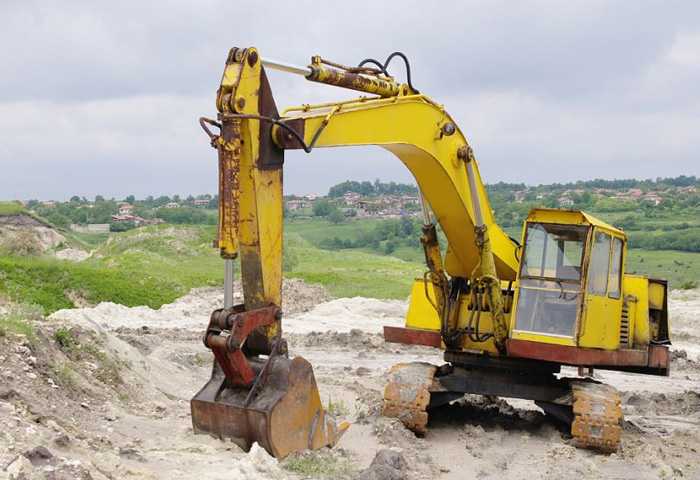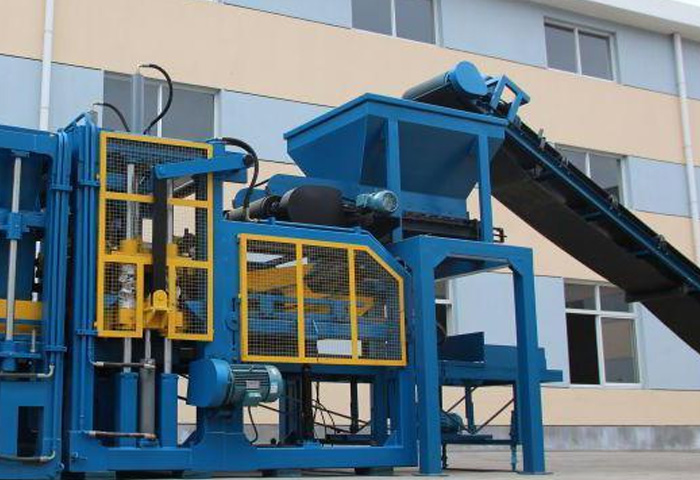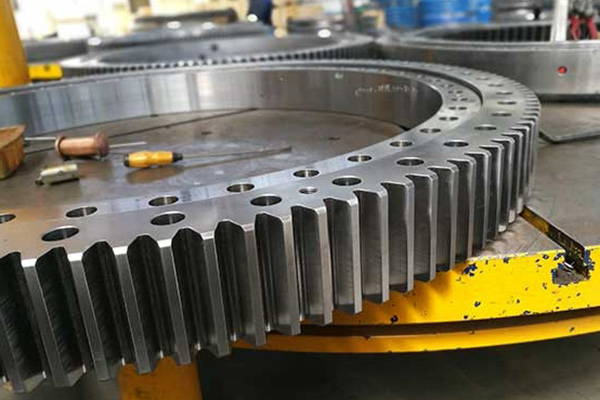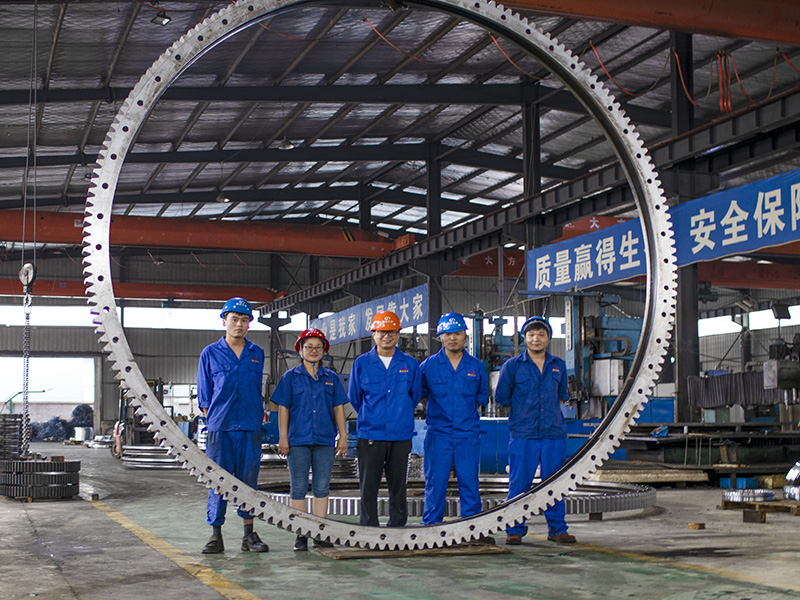
The Unsung Hero: How Crane Slewing Bearings Power Tower Crane Operations
2025-05-27
The modern crane, especially the towering giants you see on a construction site, is a marvel of engineering. But what allows these massive structures to rotate smoothly and precisely, lifting heavy loads with grace? The answer often lies in a critical component known as the slewing bearing. This article, written from my perspective as Allen, a factory owner in China specializing in slewing bearing manufacturing, will delve into the world of crane slewing bearings, particularly for tower crane applications. We’ll explore their function, types, importance, and what you, like our typical customer Mark Thompson from the USA, should look for when sourcing these vital mechanical components. If you’re involved in manufacturing or maintaining heavy machinery that requires rotational movement, understanding the slewing bearing is key to your success. This piece will provide valuable insights for procurement officers, engineers, and anyone interested in the mechanics behind powerful crane operations.
What Exactly is a Slewing Bearing and Why is it Critical for Cranes?
A slewing bearing, also often called a slewing ring, is a large-diameter rotational rolling-element bearing that is designed to handle axial, radial, and moment loads simultaneously. Think of it as a sophisticated turntable that can support immense forces while still allowing a connected structure to rotate smoothly. In the context of a crane, whether it’s a mobile crane, an excavator, or a static tower crane, the slewing bearing is the linchpin that connects the upper structure (the boom, cab, counterweights) to the undercarriage or tower. This component of the crane is absolutely essential because it facilitates the crane slewing motion, which is the ability of the crane‘s upper section to swing or rotate horizontally.
The importance of a high-quality slewing bearing in a crane cannot be overstated. It directly impacts the crane‘s operational efficiency, safety, and lifespan. A failing slewing bearing can lead to catastrophic failures, costly downtime, and significant safety risks on a busy construction site. Therefore, the design, material selection, and manufacturing precision of crane slewing bearings are paramount. These bearings are used to ensure that the crane can lift and move heavy materials accurately and safely to their intended locations. The slewing bearing allows the crane to position its load with precision, which is vital for complex lifting operations. Many crane types rely on this.
As a manufacturer, we see firsthand how critical the slewing bearing is. It’s not just a part; it’s the heart of the crane’s rotating system. The slewing bearings are essential components for any machinery that requires heavy-duty rotational capabilities. The smooth operation of the slewing mechanism is a testament to the quality of the slewing bearing installed. The ability to handle heavy loads during the slewing process is a primary design consideration for every crane slewing bearing.

How Does a Tower Crane Slewing Bearing Enable 360-Degree Rotation?
A tower crane slewing bearing is a specialized type of slewing ring designed to meet the specific demands of tall tower crane structures. Its fundamental job is to allow the jib (the operating arm) and the counterweight assembly of the tower crane to rotate smoothly around the vertical axis of the tower crane‘s mast. This 360-degree rotational capability is what gives the tower crane its extensive reach and operational flexibility on a construction site, enabling it to service a large area from a fixed position. The slewing bearing allows the crane to rotate, which is fundamental for its operation.
The magic behind this movement lies in the bearing’s construction. A typical tower crane slewing bearing is made up of an inner ring and an outer ring. One ring is typically fixed to the stationary part of the crane (like the tower mast), while the other is attached to the rotating superstructure. Between these inner and outer rings are the rolling elements – either balls or rollers – which are housed in raceways. These rolling elements reduce friction, allowing the crane superstructure to rotate with minimal effort and high precision, even when under significant heavy loads. Many tower crane slewing bearings also incorporate gear teeth on the inner or outer ring, which mesh with a pinion driven by a motor, providing the powered slewing motion. The horizontal rotation of the entire superstructure is managed by this system.
The ability for a tower crane to rotate and position building materials flexibly across a site is a direct result of the tower crane slewing bearing. This slewing action is vital for modern construction methods, especially in high-altitude operations. The precision of the slewing bearing ensures that the tower crane’s movements are controlled and safe. The demands on a tower crane slewing bearing are immense, considering the forces involved in moving long jibs and heavy counterweights.
What Are the Different Types of Slewing Bearings Used in Crane Slewing Systems?
When it comes to crane slewing bearings, there isn’t a one-size-fits-all solution. The type of slewing bearing chosen depends heavily on the specific application, the magnitude and type of loads, the required precision, and the operational environment of the crane. As a High Quality Slewing Ring Bearings Supplier, we manufacture a variety of types to meet diverse needs. Here are some common types you’ll encounter:
- Single-Row Four-Point Contact Ball Slewing Bearings: These are perhaps the most common type found in many crane applications, including some tower crane models. They feature a single row of ball bearings that make four points of contact with the raceways (often a Gothic arch design). This design allows them to accommodate axial, radial, and moment loads. They are compact and versatile, suitable for medium to heavy duty applications. A four-point contact ball bearing is a popular choice for general crane slewing needs.
- Single-Row Crossed Roller Slewing Bearings: These bearings are designed with cylindrical rollers arranged in a crisscross pattern, with each roller oriented at 90 degrees to the adjacent ones. This configuration allows them to handle radial loads, axial loads, and tilting moments with a high degree of rigidity and accuracy. They are often used in applications requiring greater stiffness and higher load capacity than single-row ball bearings. You can find more about specific models like a Single Row Crossed Roller Slewing Bearing on our product pages.
- Double-Row Ball Slewing Bearings: These bearings have two rows of ball bearings, which significantly increases their load capacity, particularly for axial forces, compared to single-row ball bearings. They are suitable for crane applications with higher load requirements or where greater stability is needed for the crane slewing mechanism.
- Three-Row Roller Slewing Bearings: For the most demanding heavy-duty cranes and machinery, three-row roller slewing bearings offer the highest load capacity. They typically have three independent rows of rollers, each designed to carry a specific type of load (e.g., one for radial loads, two for axial and moment loads). These robust bearings are used in very large crane systems and heavy excavator applications.
The choice often comes down to a balance of performance, space, and cost. For example, a light-duty mobile crane might use a single row ball slewing bearing, while a massive port crane or a large tower crane might require a three-row roller slewing ring. The design of the raceway and the quality of the rolling elements are critical for the bearing’s lifespan and performance in any crane slewing application.

Why is Load Capacity a Key Concern for Crane Slewing Bearings?
Load capacity is arguably one of the most critical specifications when selecting a slewing bearing for any crane, and especially for a tower crane. The slewing bearing must safely support the combined weight of the crane‘s entire upper structure (jib, counter-jib, operator’s cabin, hoist mechanisms) plus the maximum rated load the crane is designed to lift and move. This involves not just static vertical loads (axial loads) but also dynamic forces. When the crane is slewing (rotating), accelerating, or decelerating, or when it’s subjected to wind forces, the slewing bearing experiences complex combinations of axial loads, radial loads, and tilting moment loads.
If a slewing bearing‘s load capacity is insufficient, the consequences can be severe. Overloading can lead to premature wear and tear, deformation of the raceways, damage to the rolling elements (ball bearings or rollers), and even catastrophic failure of the bearing’s structure. This could cause the crane‘s upper section to detach or collapse, posing an extreme danger to personnel and property on the construction site. Therefore, engineers meticulously calculate all potential load scenarios to choose the right slewing bearing that offers an adequate safety margin. For a tower crane, which operates at significant heights, the stability provided by a correctly specified slewing bearing is fundamental to its safe operation.
As manufacturers, we always emphasize the importance of accurate load calculations to our clients like Mark. It’s not just about the weight the crane can lift; it’s about all the forces the slewing ring will encounter during its operational life. The slewing bearing is truly a critical component where underspecification is not an option. The ability of the crane slewing bearings to handle heavy loads under various dynamic conditions ensures the crane operates effectively.
How Does Bearing Manufacturing Impact the Performance of a Slewing Ring in a Crane?
The performance and longevity of a slewing ring in a crane are directly tied to the quality of its bearing manufacturing process. From my experience as a factory owner, every step, from raw material selection to final inspection, plays a pivotal role. High-quality steel, properly heat-treated to achieve the desired hardness and toughness for the inner and outer rings and raceways, is fundamental. This ensures the bearing can withstand high stress concentrations and resist wear and tear and spalling (flaking of material) over many cycles of crane slewing.
Precision machining is equally vital. The raceways, where the rolling elements move, must be ground to exacting tolerances to ensure smooth rotation and even load distribution. Any imperfections can lead to increased friction, noise, premature wear, and ultimately, failure of the crane slewing bearing. The geometry of the raceway (e.g., the Gothic arch in a four-point contact ball bearing) must be perfect to maintain the correct contact angles and load capacity. Furthermore, if the slewing bearing includes gear teeth for the slewing drive, the precision of these gears is crucial for smooth, efficient power transmission and to prevent excessive wear on the pinion or the slewing ring gear itself. We also pay close attention to sealing systems, as effective seals protect the lubricant and rolling elements from contamination by dust, moisture, and other debris, which is common in harsh environments like a construction site. This meticulous attention during bearing manufacturing helps reduce future maintenance costs.
For clients like Mark, who are quality-sensitive, understanding these manufacturing nuances is important. It’s why we encourage factory visits and transparent quality control processes. A well-made slewing bearing translates to a reliable and efficient crane. The quality of the slewing bearings we produce directly impacts the crane’s ability to rotate smoothly and operate without interruption. Our commitment to quality in bearing manufacturing for crane slewing bearings helps our customers optimize their machinery performance.
What are Common Bearings Applications Beyond Cranes and Tower Cranes?
While cranes and tower cranes are prominent users of slewing bearings, these versatile components are essential in a vast array of other machinery and equipment across numerous industries. Any application that requires a heavy structure to rotate relative to another, especially while supporting significant loads, can benefit from a slewing ring. As a bearing company, we supply slewing bearings for a wide range of bearings applications. For example, you’ll find our products, including specialized roller slewing bearing for bucket-wheel excavators,wheeled cranes, in many different fields.
Here’s a glimpse into some other common bearings applications:
- Excavators and Earthmoving Equipment: Similar to cranes, excavators require robust slewing bearings to allow their upper chassis (cab, boom, arm) to rotate 360 degrees for digging and material handling. The slewing motion is constant in an excavator.
- Wind Turbines: Slewing bearings are used in wind turbines as blade pitch bearings (allowing blades to adjust their angle to the wind) and yaw bearings (allowing the entire nacelle to rotate and face the wind). These are critical for optimizing energy capture and protecting the turbine in high winds.
- Rotary Tables and Indexing Tables: In manufacturing and automation, slewing rings provide precise rotational movement for positioning workpieces or tools.
- Medical Equipment: Large imaging devices like CT scanners and MRI machines often use precision slewing bearings to rotate heavy gantries around the patient smoothly and quietly.
- Robotics: Industrial robots, especially larger ones with articulated arms, use slewing bearings in their joints to provide a wide range of motion and support payloads.
- Radar and Antenna Systems: For tracking and positioning, radar dishes and large communication antennas are mounted on slewing bearings that allow them to rotate and tilt accurately.
- Forestry Equipment: Harvesters and forwarders use slewing bearings for their booms and grapples.
- Port Machinery: Ship-to-shore cranes, stackers, and reclaimers all rely heavily on large-diameter slewing bearings to handle the massive heavy loads involved in container and bulk material handling. The crane slewing function is essential here.
This diversity highlights the adaptability of slewing bearing technology. The fundamental principles of supporting combined loads and enabling smooth rotation are valuable across many sectors that use slewing mechanisms. Each application, whether it’s a tower crane or a delicate medical scanner, has unique requirements for its slewing bearing.

How Can You Identify and Address Wear and Tear in Crane Slewing Bearings?
Even the best-manufactured crane slewing bearings will eventually show signs of wear due to the demanding conditions they operate under. Regular inspection and timely maintenance are crucial to prevent unexpected failures and extend the bearing’s service life, which is essential for any crane or tower crane. Identifying early signs of wear can save significant costs and downtime. For instance, a change in the slewing motion of the crane can be an indicator.
Here are some common indicators of wear and tear in crane slewing bearings:
- Increased Noise: Grinding, popping, or clicking sounds during slewing can indicate issues with the raceways or rolling elements. This might be due to inadequate lubrication, contamination, or damage like spalling.
- Rough or Jerky Rotation: If the crane slewing motion is no longer smooth, it could point to uneven wear in the raceway or damaged rollers/balls. This affects the crane’s ability to rotate smoothly.
- Increased Play or "Rocking": Excessive clearance or a rocking motion in the bearing indicates significant wear and loss of preload. This can compromise the stability of the crane‘s upper structure.
- Metal Particles in Lubricant: Finding metal shavings or flakes in the grease (lubricant) is a clear sign of internal wear and potential bearing damage. Regular grease analysis can detect this.
- Increased Torque Requirement: If the slewing motors are working harder to rotate the crane, it could be due to increased friction within the slewing bearing. This increased torque can strain the drive system.
- Seal Damage: Damaged or leaking seals can allow contaminants to enter the bearing and lubricant to escape, accelerating wear. This is especially true in challenging environments.
Addressing these issues often starts with thorough lubrication. Ensuring the slewing bearing has the correct type and amount of lubricant is the first line of defense. If wear is more advanced, options might include re-torqueing the mounting bolts, or in more severe cases, the slewing bearing may need to be replaced. For a tower crane slewing bearing, replacement is a significant undertaking, so preventative maintenance and early detection are key to avoiding such a scenario. Catching issues before they cause a pit or significant damage to the raceway is crucial.
What Should Procurement Officers like Mark Look for When Sourcing Tower Crane Slewing Bearings from China?
For procurement officers like Mark Thompson, who are knowledgeable and seek both quality and competitive pricing, sourcing tower crane slewing bearings or any crane slewing bearings from China can be a very effective strategy. However, it requires due diligence. As a Chinese manufacturer exporting to the USA, North America, Europe, and Australia, I understand Mark’s key concerns: load capacity verification, material certifications, dimensional accuracy, gear quality, sealing effectiveness, corrosion resistance, lead times, and compliance with industry standards (e.g., ISO for bearings).
Here’s my advice for Mark and others in his position:
- Verify Manufacturer Credentials: Look beyond the website. Ask for certifications (ISO 9001 is a good start), factory audit reports, and customer references, particularly from your region or industry. A reputable bearing company will be transparent.
- Detailed Technical Specifications: Don’t just rely on part numbers. Provide your supplier with comprehensive drawings and clearly define all critical parameters: load spectrum, speed, duty cycle, environmental conditions, and required service life. This helps ensure the slewing bearing is designed to handle your specific crane needs.
- Material Certifications and Heat Treatment Records: Request material certificates for the steel used in the slewing ring (for both inner and outer rings) and records of the heat treatment process. This is vital for ensuring the bearing has the required strength and durability.
- Quality Control and Inspection Processes: Understand the supplier’s quality control procedures. Do they perform dimensional checks, NDT (non-destructive testing) for cracks, hardness testing, and gear precision checks (if applicable)? Inquire about their testing for the tower crane slewing bearing.
- Communication and Technical Support: Efficient communication is key, especially to avoid "shipment delays impacting production schedules" – a common pain point Mark experiences. Ensure the supplier has proficient English-speaking sales and technical staff who can understand your needs and respond promptly. Does the supplier offer support if there are issues with the crane slewing bearing after delivery?
- Sample Orders and Factory Visits: If possible, order a sample slewing bearing for evaluation before committing to a large volume. A factory visit can also provide invaluable insights into their capabilities and quality commitment. This is especially important for critical components that require precise engineering.
- Logistics and Lead Times: Discuss lead times upfront and understand their shipping and logistics capabilities. Reliable delivery is crucial for integrating the crane slewing bearings into your manufacturing schedule.
- Consider Specialized Bearings: If your application demands it, inquire about options like a Precision double-row ball slewing ring, which offers enhanced performance for specific crane models.
By focusing on these areas, procurement officers can build strong relationships with reliable Chinese slewing bearing suppliers and secure high-quality components that require less frequent replacement, thus improving the overall value for their machinery.

How Do Advanced Slewing Bearings Contribute to the Efficiency of Modern Crane Operations?
Modern crane operations, whether on a dynamic construction site with a tower crane or in a busy port with heavy-duty cranes, demand increasing levels of efficiency, precision, and reliability. Advanced slewing bearings play a significant role in meeting these demands. Innovations in slewing bearing design, materials, and bearing manufacturing directly translate to improved crane performance. These improvements help crane operators lift and move materials more effectively.
One key area is the development of slewing bearings to improve smooth and precise rotation even under extreme heavy loads. This is achieved through optimized raceway geometries (like refined Gothic arch profiles for ball bearings), higher precision rolling elements, and improved internal clearance control. Such precision allows for finer control of the crane slewing motion, reducing load sway and enabling faster, safer positioning of building materials or cargo. This precise crane slewing is critical for complex lifts.
Furthermore, advanced sealing technologies are crucial. Modern seals are more effective at preventing contamination from dust, dirt, and moisture, especially in harsh environments, and at retaining lubricant. This extends the lubrication intervals, reduces maintenance costs, and prolongs the bearing’s operational life. Better lubrication means less friction, which can lead to reduced energy consumption for the slewing drive motors. Some slewing bearings are also designed to be more wear-resistant, incorporating special surface treatments or materials that can withstand higher contact stresses and reduce the rate of wear and tear. The integration of sensors into slewing bearings is another emerging area, allowing for real-time monitoring of bearing condition, temperature, and stress, enabling predictive maintenance and preventing unexpected failures of the crane. Using the right slewing bearing means the crane can rotate more efficiently for longer.
What Future Trends Can We Expect in Slewing Bearing Technology for Heavy Machinery?
The world of slewing bearing technology, crucial for cranes, tower cranes, and other heavy duty machinery, is continuously evolving. As a manufacturer, we are always looking ahead to anticipate and drive these changes. Several key trends are shaping the future of slewing bearings, driven by the increasing demands for performance, sustainability, and intelligence in machinery. The goal is always to provide a better slewing experience.
One major trend is the ongoing development of higher load capacity and more compact slewing bearings. Engineers are constantly exploring new materials, advanced heat treatment processes, and innovative internal geometries to allow bearings are designed to withstand even greater moment loads and axial loads within the same or smaller physical envelopes. This is particularly important for applications like larger wind turbines and bigger crane models where space and weight are critical. We anticipate more use of specialized designs such as various Light Type & Flange Slewing Ring Bearings which can be tailored for specific weight and space constraints in crane slewing systems.
"Smart" slewing bearings with integrated sensor technology are another significant area of development. These bearings will be able to monitor their own condition in real time – tracking variables like temperature, vibration, load, and lubricant quality. This data can be fed into predictive maintenance systems, allowing operators to schedule maintenance proactively, avoid unexpected downtime, and optimize the bearing’s service life. This will be revolutionary for maintaining crane slewing bearings and tower crane slewing bearings.
Material science will continue to play a vital role. We expect to see wider adoption of advanced alloys, composites, and surface coatings that offer superior wear-resistant properties, better corrosion resistance (especially for offshore crane and wind turbines operating in challenging environments), and improved performance in extreme temperatures. Additionally, there’s a growing focus on environmentally friendly lubricant options and designs that minimize lubricant leakage. As equipment like the tower crane becomes more sophisticated, so too will its components that require slewing capabilities. The overall aim is to make the slewing ring an even more reliable, efficient, and intelligent component of the crane and other heavy machinery.
Key Takeaways
- Slewing bearings (or slewing rings) are essential for the rotational movement of cranes, tower cranes, and many other types of heavy machinery, enabling them to lift and move heavy loads and rotate with precision.
- They are designed to handle complex load combinations, including axial, radial, and moment loads, making the load capacity a critical design parameter.
- Different types exist, such as single-row ball bearings (often four-point contact ball type), crossed roller bearings, double-row ball bearings, and three-row roller bearings, each suited for different crane slewing applications.
- The quality of bearing manufacturing, including material selection, heat treatment, and precision machining of raceways and gears, directly impacts the slewing bearing’s performance and lifespan.
- Regular inspection for signs of wear (e.g., noise, rough rotation, play) and proper lubrication are vital for maintaining crane slewing bearings and preventing costly failures.
- When sourcing slewing bearings, especially from international suppliers, procurement officers should verify credentials, demand detailed specifications and certifications, and ensure clear communication, particularly for critical tower crane slewing bearing components.
- Future trends in slewing bearing technology include higher load capacity in compact designs, integrated sensor technology for "smart" bearings, and advanced materials for enhanced durability and performance in harsh environments. The slewing mechanism of tomorrow’s crane will be even more advanced.





